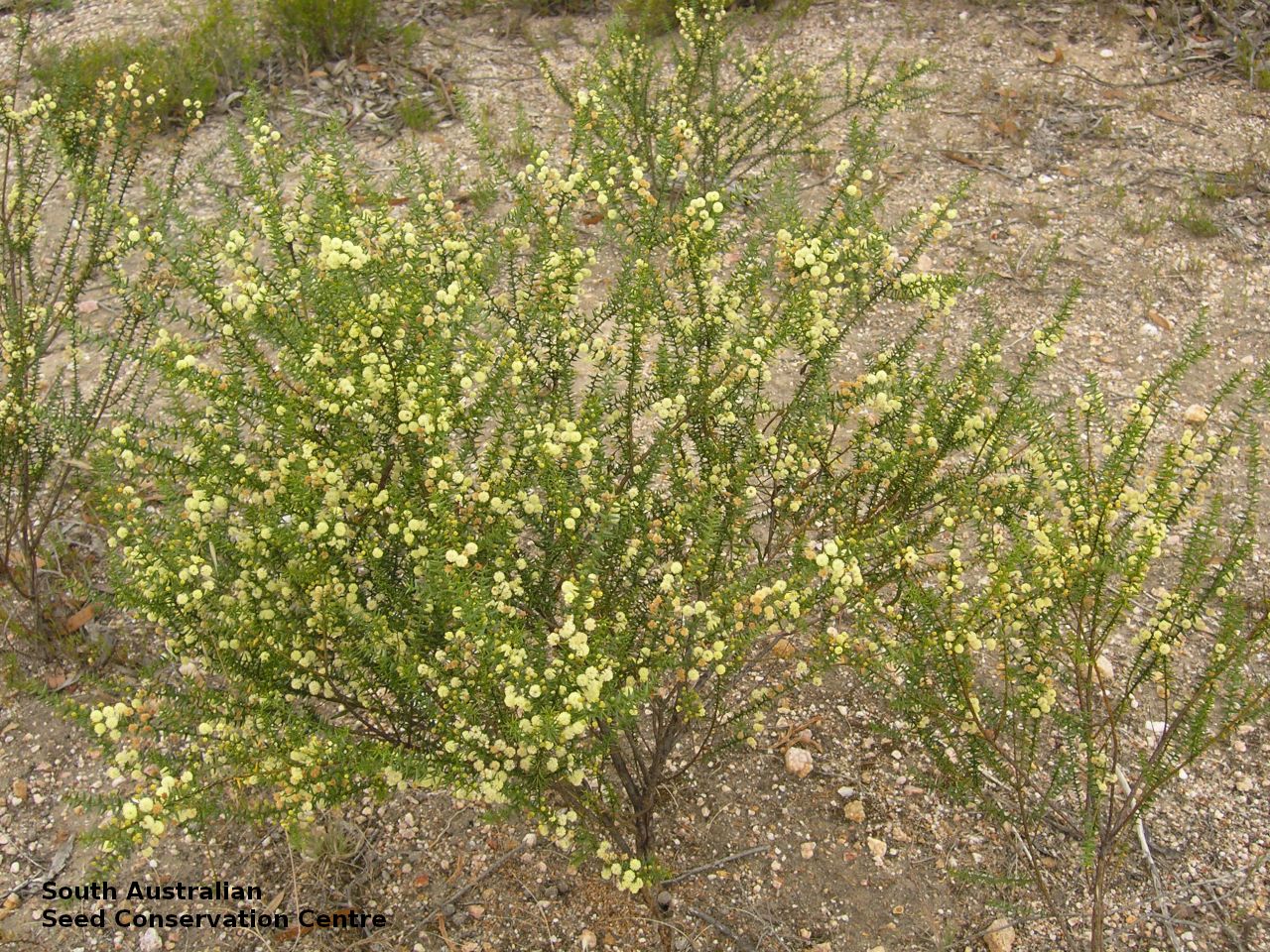
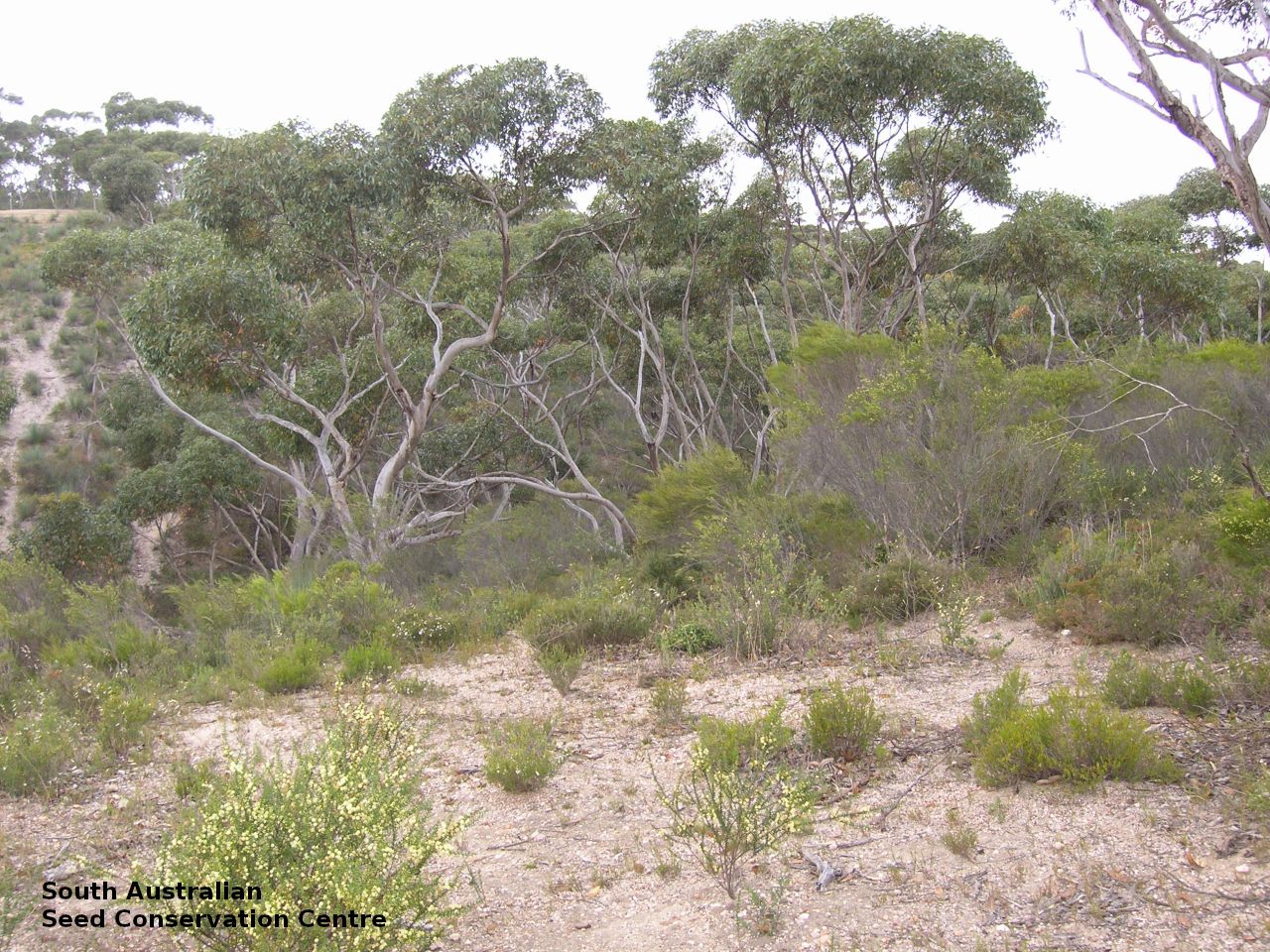
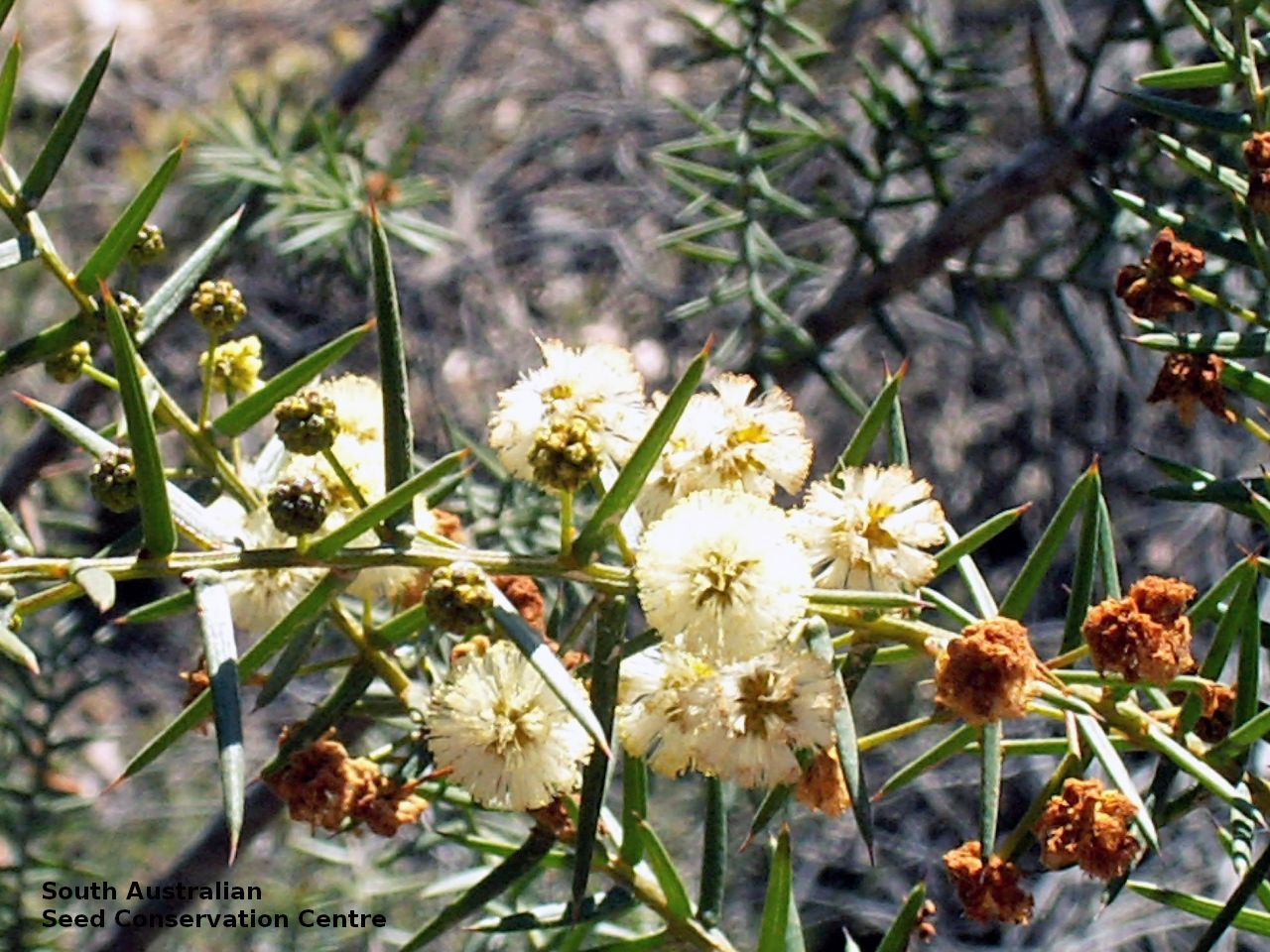
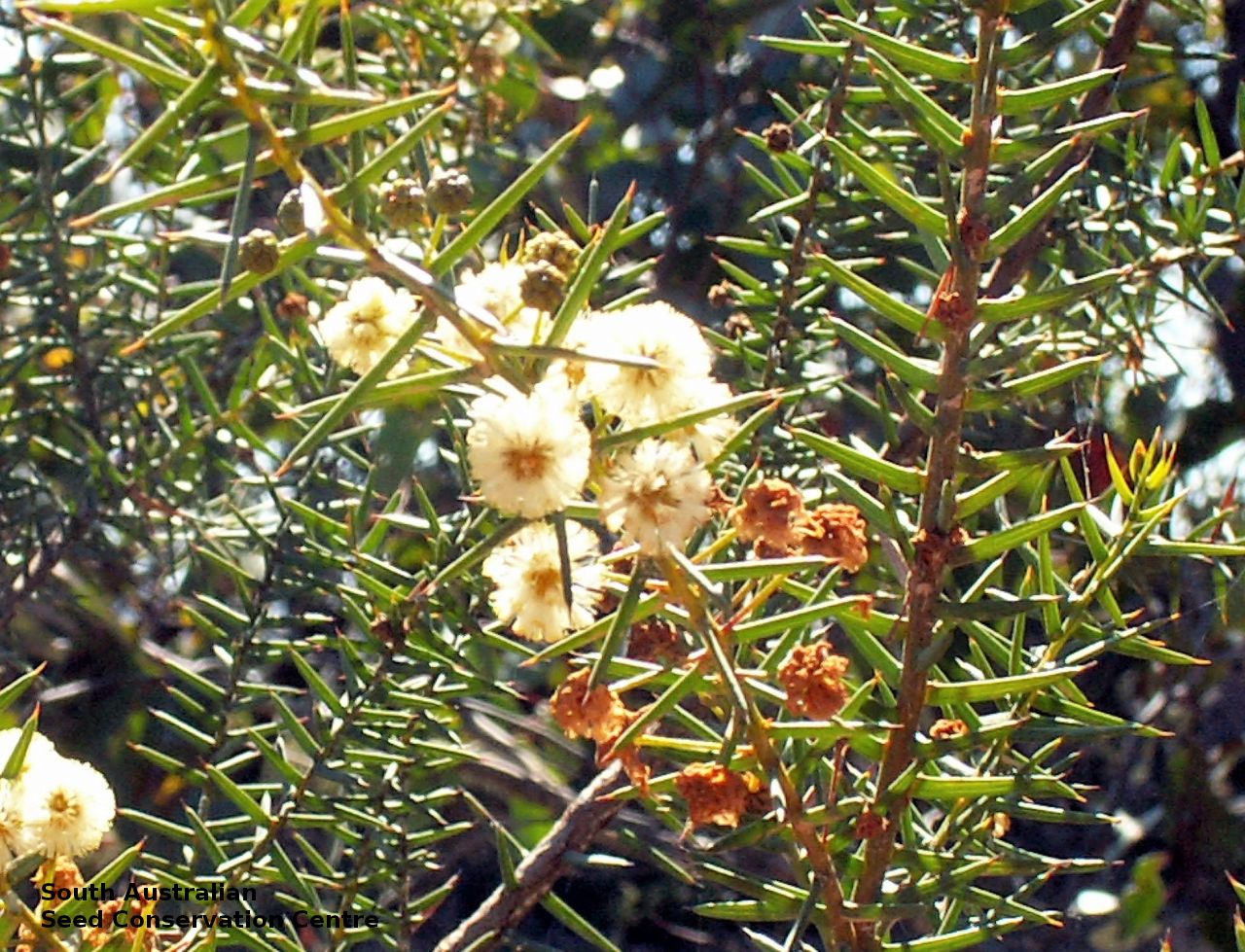
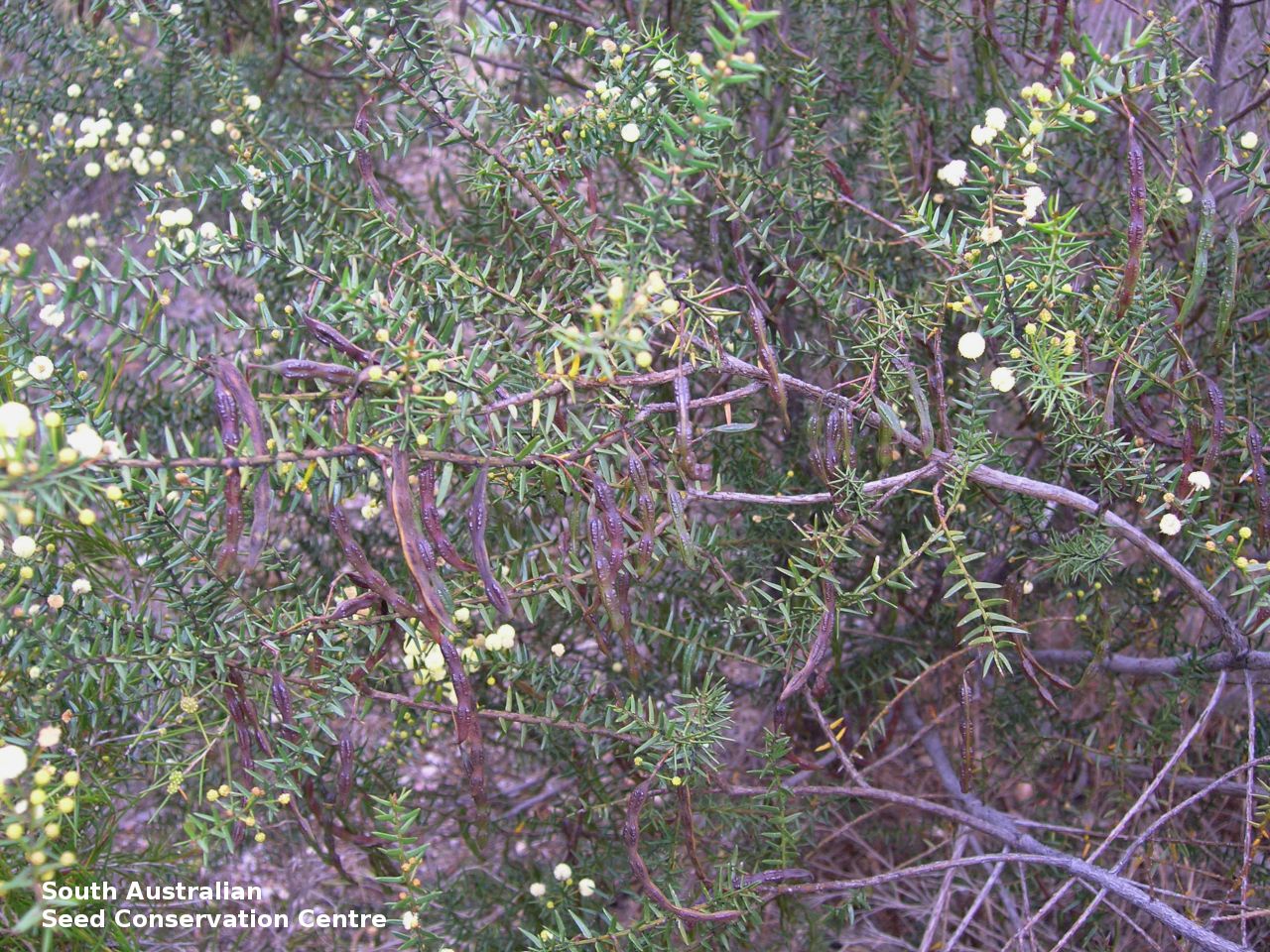
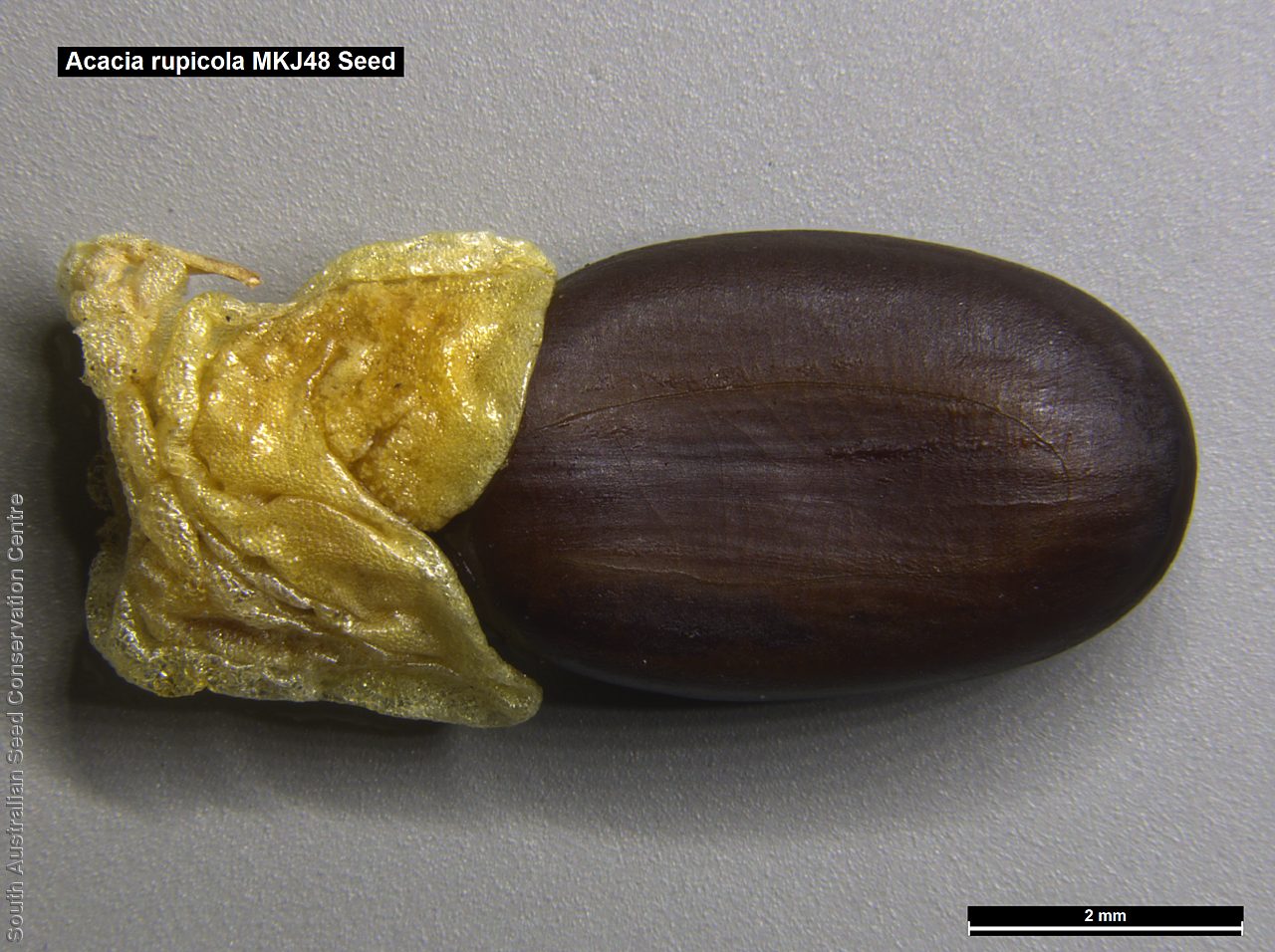
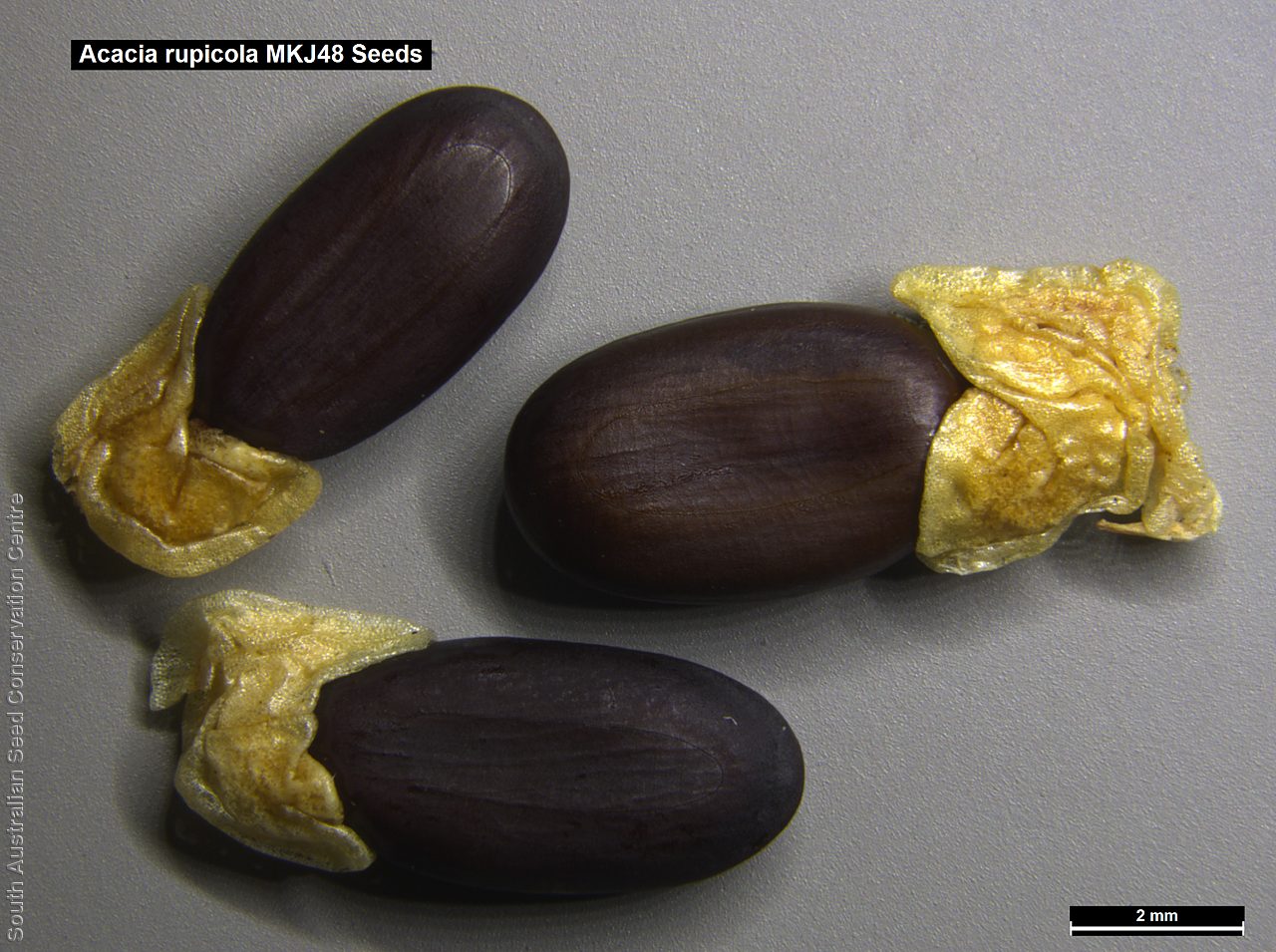

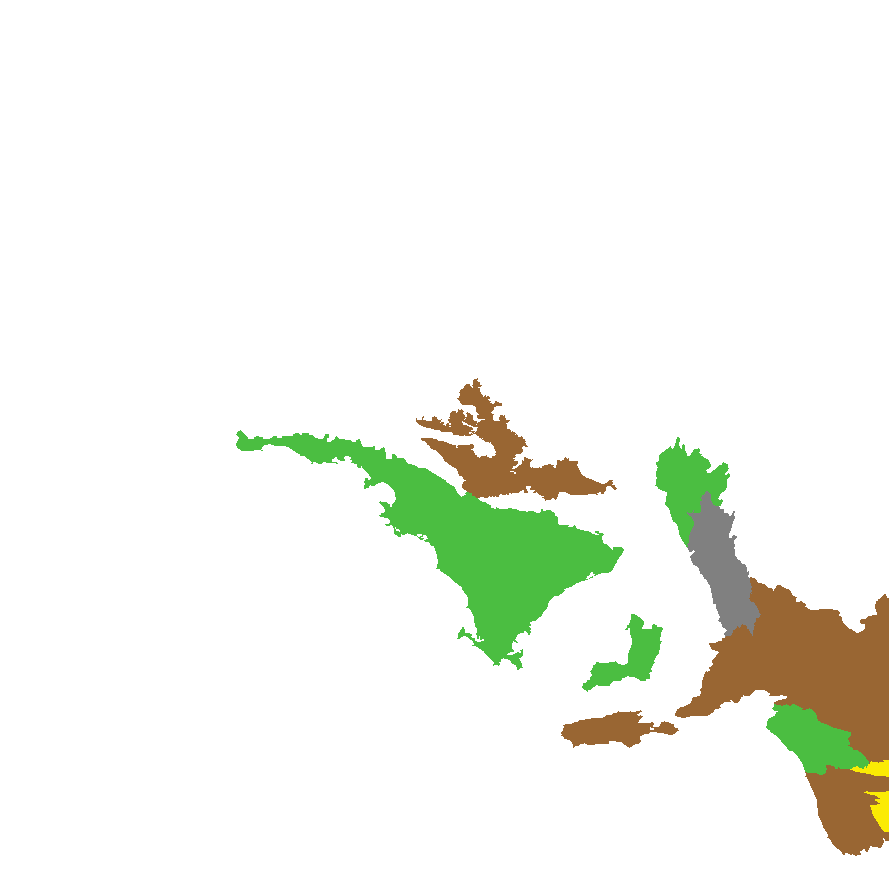
Botanical art
Common names
Rock Wattle
Balm Wattle
Etymology
Acacia from the Greek 'akakia' and derived from 'ake' or 'akis' meaning a sharp point or thorn and 'akazo' meaning to sharpen. Dioscorides, the Greek physician and botanist used the word in the 1st century AD for the Egyptian thorn tree, Acacia arabica. Rupicola from the Latin 'rupes' meaning rock and 'colo' meaning to inhabit, referring to the rocky habitat where the species is found.
Distribution and status
Found on southern Eyre Peninsula, Flinders Ranges, southern Yorke Peninsula, Mount Lofty Ranges, Kangaroo Island, Murray (Monarto area) and the upper South-east, growing in rocky areas in woodland and forest, or in open scrub in near coastal areas; associated with sandy, alkaline yellow duplex, calcareous sands and hard alkaline red duplex soils. Also found in Victoria. Native. Common in South Australia. Common in Victoria
Herbarium regions: Flinders Ranges, Eyre Peninsula, Northern Lofty, Murray, Yorke Peninsula, Southern Lofty, South Eastern, Green Adelaide
NRM regions: Adelaide and Mount Lofty Ranges, Eyre Peninsula, Northern and Yorke, South Australian Murray-Darling Basin, South East
AVH map: SA distribution map (external link)
Plant description
Erect to 2.5 m high; glabrous, rigid, prickly, somewhat diffuse viscid shrubs with a resinous odour. Leaves linear-lanceolate to narrowly triangular, broad and swollen at the base to 2.5 cm long and 2.5 mm wide. Inflorescences simple and axillary, solitary with globular, creamy yellow flower-heads. Flowering between August and November. Fruits are long brown curved pod to 7 cm long and 5 mm wide. Seeds are dark brown to black, oblong to elliptic seeds to 8 mm long and 4 mm wide. Seed embryo type is investing.
Seed collection and propagation
Collect seeds between October and December. Collect mature pods that are turning brown, with hard, dark seeds inside. Be careful when collecting the pods, as plants are very prickly. Place the pods in a tray and leave to dry for 1-2 weeks or until the pods begin to split. Then rub the dried pods to dislodge the seeds. Use a sieve to separate any unwanted material. Store the seeds with a desiccant such as dried silica beads or dry rice, in an air tight container in a cool and dry place. This species has physical dormancy that needs to be overcome for the seed to germinate (e.g. nicking or softening the seed coat).
| Location | No. of seeds (weight grams) | Number of plants | Date collected | Collection number Collection location | Date stored | % Viability | Storage temperature |
|---|---|---|---|---|---|---|---|
| BGA MSB | 3,800 (80 g) 3,800 (80 g) | 60+ | 10-Nov-2004 | MKJ48 Eyre Peninsula | 31-Mar-2006 | -18°C |
Number of plants: This is the number of plants from which the seeds were collected.
Collection location: The Herbarium of South Australia's region name.
% Viability: Percentage of filled healthy seeds determined by a cut test or x-ray.